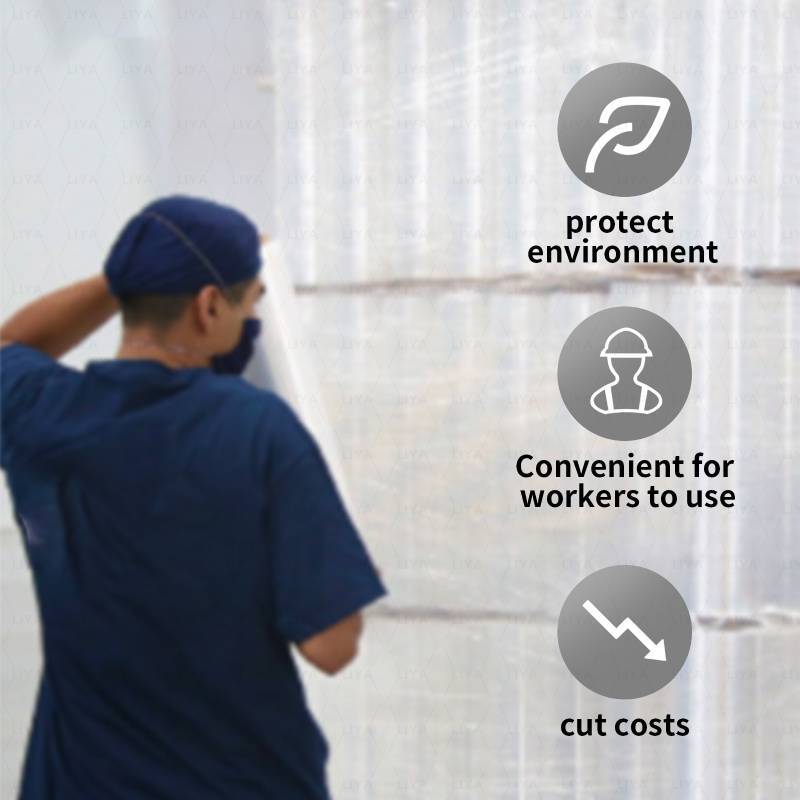Exploring the Applications and Benefits of Stretch Film in Various Industries
The Use of Stretch Film An Essential Tool in Modern Packaging
Stretch film, a highly elastic polymer plastic film, is widely used in various industries for packaging and securing products. This versatile material offers numerous benefits that enhance the efficiency and safety of shipping and storage processes. In this article, we will explore the applications, advantages, and environmental considerations surrounding the use of stretch film.
Applications of Stretch Film
Stretch film is primarily used in the transportation and logistics sectors to wrap products on pallets. By securing items tightly together, stretch film prevents them from shifting during transit, which can help reduce the risk of damage. This is especially important for businesses shipping fragile goods, as the film provides a layer of protection against impacts and abrasions.
Beyond palletizing, stretch film is utilized in various other applications, including bundling smaller items together for easier handling and transportation. Retailers often use it to wrap products for display purposes, enhancing the aesthetic appeal while providing protection from dust and damage. Additionally, industries such as agriculture use stretch film to wrap and protect bales of hay or other products, ensuring they remain intact and dry.
Advantages of Stretch Film
One of the primary advantages of stretch film is its ability to conform to the shape of the products being wrapped. Its elasticity allows it to stretch up to 300% of its original size while maintaining a secure hold. This adaptability reduces the amount of film needed per load, leading to cost savings and less waste.
Furthermore, stretch film offers excellent puncture resistance and tear strength, making it a reliable choice for protecting goods during shipping. It also has moisture-resistant properties, which help safeguard products from water damage, especially in humid conditions or during transport over long distances.
use of stretch film

Another notable benefit is the film’s transparency, allowing for easy visibility of the wrapped products. This characteristic is particularly important in retail settings where displaying products is crucial for sales. Additionally, stretch film can be printed on, enabling businesses to include branding or product information directly on the packaging.
Environmental Considerations
As with many packaging materials, the use of stretch film raises questions regarding environmental sustainability. Traditionally made from polyethylene, stretch film is often criticized for its disposable nature and contribution to plastic waste. However, many manufacturers are now producing stretch films that are recyclable or made from recycled materials, which can help mitigate environmental impact.
Transitioning to more sustainable options, such as biodegradable or compostable films, is another avenue being explored by the packaging industry. While these alternatives are still in the developmental phase, they show promise in reducing the ecological footprint of stretch wrap.
Moreover, optimizing the use of stretch film through better training and equipment can minimize waste. Companies can invest in stretch film machines that reduce the amount of film used while still providing adequate protection for their products.
Conclusion
The use of stretch film plays a crucial role in modern packaging across various industries. Its versatility, efficiency, and protective qualities make it an essential tool for ensuring the safe transport and storage of goods. While considerations regarding environmental sustainability must be addressed, ongoing innovations in stretch film production provide hope for a more eco-friendly future. As businesses continue to seek cost-effective and reliable packaging solutions, stretch film remains a prime candidate, showcasing the balance between functionality and environmental responsibility.
-
The Best Uses for Small Trash Bags in Daily LifeNewsJul.01,2025
-
Stylish Reusable Grocery Bags TrendsNewsJul.01,2025
-
Shipping Advantages of Using Bubble Envelopes BulkNewsJul.01,2025
-
How Compostable Mailing Bags Reduce Environmental ImpactNewsJul.01,2025
-
Environmentally - Friendly Bulk Poly MailersNewsJul.01,2025
-
Eco Friendly Custom Laminated Tote BagsNewsJul.01,2025
-
Have the freedom of customizing your custom mailers any way you want! Our dedicated packaging support will help deliver you the mailing experience you need to elevate your shipping experience to the next level! Start making a strong impression on your customers and stand out from your competitors! -
LIYA uses high quality raw materials which directly purchased from large enterprises domestic and overseas such as PetroChina, Sinopec, Sabic, Equate, ExxonMobil, Dow Chemical, Total, and Borouge, ensuring the price advantage and quality of the raw materials. -
LIYA uses high quality raw materials which directly purchased from large enterprises domestic and overseas such as PetroChina, Sinopec, Sabic, Equate, ExxonMobil, Dow Chemical, Total, and Borouge, ensuring the price advantage and quality of the raw materials.





